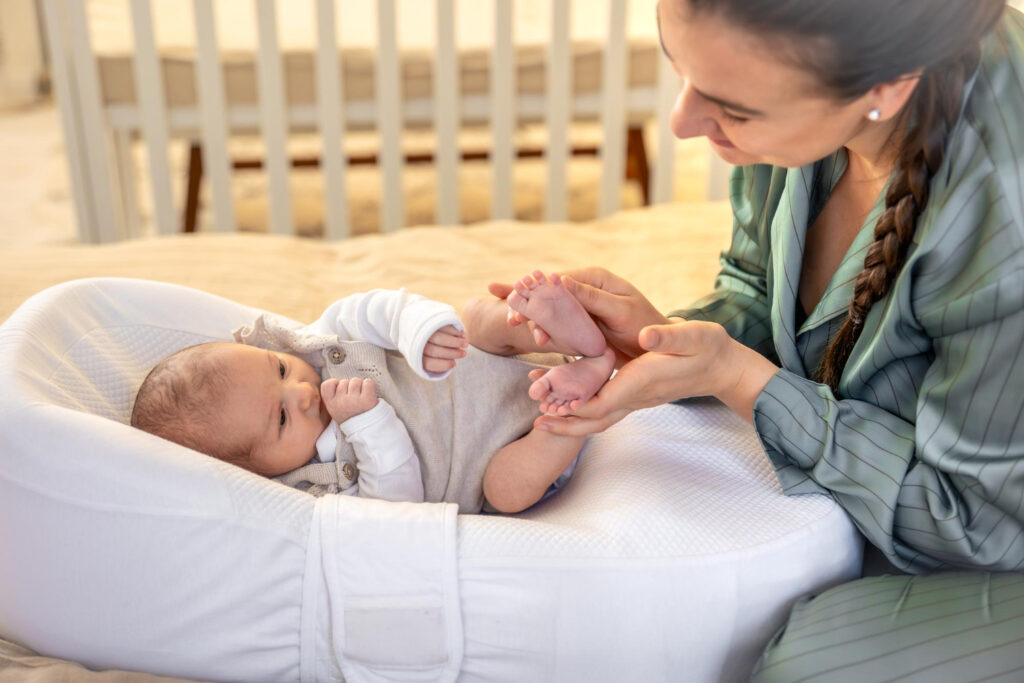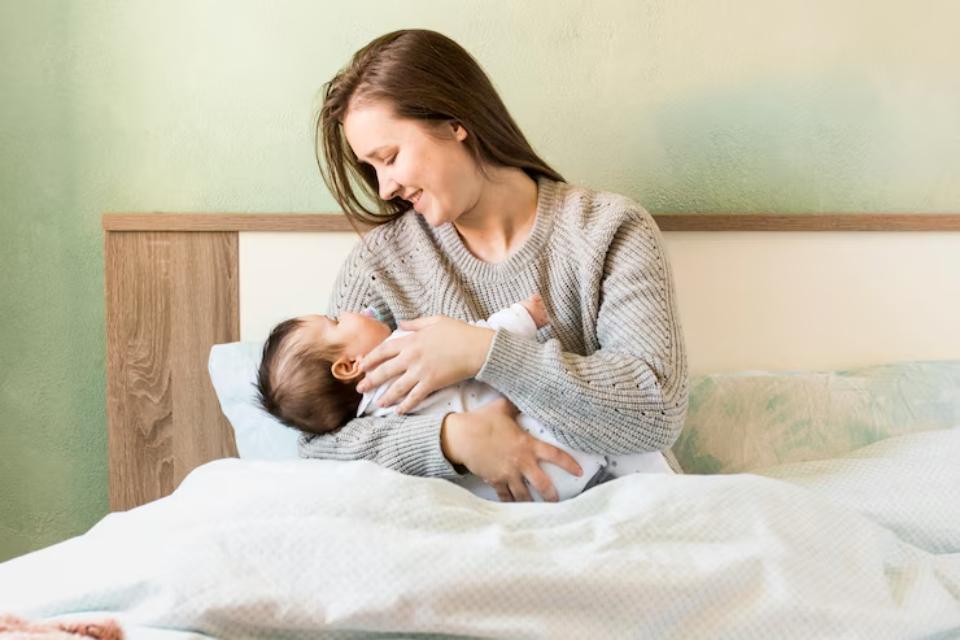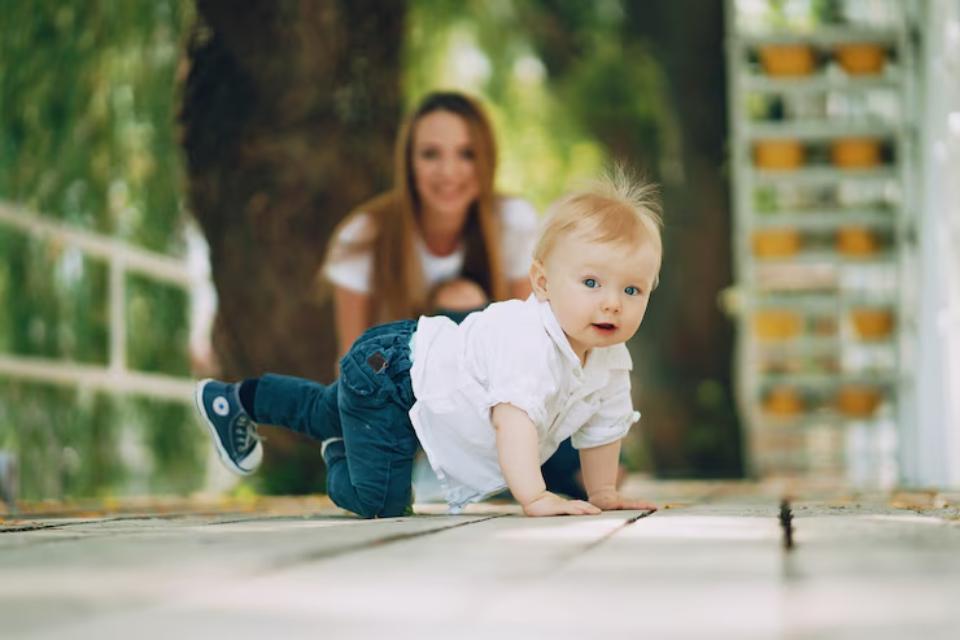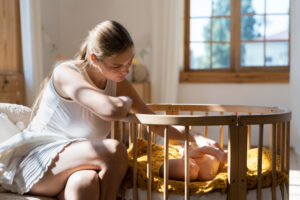The Parenting Blog

Setting Up the Ideal Sleep Environment for Your Newborn
You’ve rocked, fed, swaddled, and sung lullabies — yet your baby still struggles to settle. Sound familiar? While soothing routines are key, the unsung hero in newborn sleep success is often the environment itself.
Creating the best baby sleep setup isn’t about buying every gadget or turning your nursery into a Pinterest dream. It’s about building a space that feels safe, calm, and conducive to rest for both you and your baby.
In this guide, we’ll walk you through the science and practicality behind the ideal newborn sleep environment, from lighting and temperature to noise and bedding choices. Whether you’re a first-time parent or simply seeking better rest for your little one, these evidence-backed tips will help transform your baby sleep space into a haven of calm and sleep-inducing comfort.
Let’s make restful nights a little more achievable.
Why Environment Matters for Newborn Sleep
A Sensitive Sleep System
Babies are born with an immature nervous system and underdeveloped sleep cycles. As a result, their ability to fall and stay asleep is highly influenced by their surroundings.
Environmental Factors That Impact Sleep
- Light levels
- Room temperature
- Noise or silence
- Mattress firmness and sleep surface
- Visual stimulation or clutter
Getting these right can dramatically reduce night waking, fussiness, and the time it takes for your baby to settle.
Light: Supporting Natural Sleep Rhythms
Why Darkness Matters
Light directly affects melatonin, the hormone responsible for sleepiness. Babies are sensitive to light, even in the early weeks. While they don’t produce much melatonin at first, by 6–8 weeks, light-dark cues start influencing their circadian rhythms.
Day vs Night Cues
- During the day: Open curtains wide, play in bright rooms, go outside
- At night: Use blackout blinds, avoid bright overhead lights, keep things dim
Night feeds and nappy changes should be done under soft lighting to avoid waking your baby too much.
Temperature: Getting the Goldilocks Zone Just Right
Ideal Sleep Temperature

Experts recommend keeping the nursery between 16–20°C. Babies can’t regulate their body temperature like adults, so extremes of hot or cold can disrupt sleep — and increase health risks like SIDS.
How to Monitor and Maintain
- Use a room thermometer (many baby monitors include this)
- Dress your baby in layers rather than thick garments
- Opt for breathable sleepwear and avoid overheating
A good rule of thumb? Your baby should wear one more layer than you would in the same room.
Noise: Embracing the Hum of Comfort
Should the Room Be Silent?
Complete silence can actually be unsettling for newborns. In the womb, they were surrounded by constant whooshing, gurgling, and heartbeat-like sounds.
Benefits of White Noise
- Mimics womb-like conditions
- Masks sudden household noises (doorbells, barking dogs, etc.)
- Helps babies transition between sleep cycles
Opt for white noise machines or apps with consistent, low-frequency sound. Avoid anything that turns off automatically — babies need it for the full duration of their sleep.
Safe and Supportive Sleep Surfaces
The Right Mattress Matters
The best baby sleep setup starts with a firm, flat mattress. Soft surfaces increase the risk of suffocation and are not recommended by safe sleep guidelines such as those from the NHS or The Lullaby Trust.
Key points:
- The mattress should fit snugly in the cot with no gaps
- Always use a fitted sheet — avoid loose blankets
- Never use pillows, duvets, or sleep positioners for newborns
Choosing the Right Cot or Moses Basket
- Ensure it meets British safety standards
- Slats should be no more than 6.5 cm apart
- Avoid second-hand mattresses unless in excellent condition
Visual Stimulation and Clutter Control
Less is More
While mobiles and nursery décor are lovely, overstimulation can keep your baby’s brain too alert for sleep. A soothing environment is uncluttered, calm, and sensory-neutral.
Suggestions:
- Choose soft, muted colours for walls and bedding
- Avoid toys in the cot
- Save stimulating objects for playtime, not sleep time
Creating a Night-Time Routine That Starts with Space
Consistency Begins in the Environment

When your baby associates a particular setting with rest, sleep becomes easier to access. That’s why your baby sleep space should look and feel the same each time they’re put down to sleep.
Helpful tips:
- Dim lights 30–60 minutes before bedtime
- Use the same sleep area for naps and bedtime if possible
- Avoid using the cot for play to maintain clear associations
For more on bedtime routines, check out our full guide to creating a consistent bedtime routine for newborns.
Real-Life Example: Amira’s Sleep Sanctuary
Amira, a new mum to twins, was struggling with constant night wakings and daytime overtiredness. She realised that her nursery setup, while beautiful, wasn’t sleep-friendly — bright colours, warm lighting, and soft mattresses were making it harder for her babies to settle.
After switching to blackout curtains, firm cot mattresses, and a white noise machine, she saw an almost immediate difference. The twins began sleeping longer stretches, and Amira found that naps and bedtime took half the time to settle them.
It wasn’t about buying new gear — it was about understanding what her babies really needed to feel secure and sleepy.
Common Mistakes to Avoid in the Baby Sleep Space

- Using nightlights too early
- Babies don’t need nightlights in the early months. They can confuse day/night signals.
- Over-bundling or overheating
- Excess layers can increase SIDS risk and disrupt comfort.
- Allowing clutter in the cot
- Keep the cot clear of toys, pillows, and loose blankets.
- Inconsistent sleep settings
- Changing sleep locations (car seat, buggy, bed-sharing) frequently can confuse your baby’s sleep cues.
- Bright or noisy bedtime environment.
Creating Calm, One Night at a Time
Your newborn’s sleep environment is more than a nursery — it’s a sleep cue, a safety zone, and a growth sanctuary. Every decision you make about light, temperature, sound, and setup can influence your baby’s ability to drift off and stay asleep.
The good news? You don’t need to buy every gadget or redecorate your entire home. By focusing on the basics — light control, temperature regulation, safety, and calming sensory cues — you’re giving your baby the best possible start to restful nights and brighter days.
Remember, even small changes can lead to big improvements. And as your baby learns to associate their sleep space with comfort and security, sleep becomes more natural for both of you.
Ready to optimise your baby’s sleep space? Share your setup wins or questions in the comments. Don’t forget to subscribe for more practical tips on baby sleep and development.









